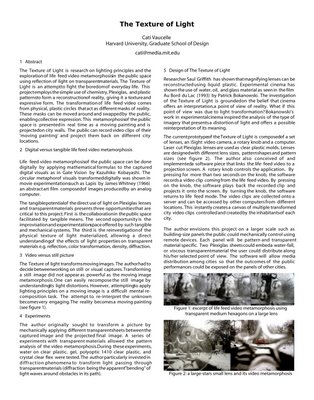If you’re new here, you may want to subscribe to my RSS feed to receive the latest Architectradure’s articles in your reader or via email. Thanks for visiting!
I am thrilled! My proposal for book chapter titled Attachments to artifacts: Collect to connect to construct has been accepted! It will be part of the first Franco-English book that will tell you all you ever wanted to know about new technologies of the self, mobilities and (co-)constructions of identities.
In this book chapter, I’ll explore the psychological trade-off between what we call virtual and tangible “attachments”: I focus on people’s attachments to things, and through things, their relations to people (virtual and digital). I address the digital object collection mechanism in relation to the way we gather artifacts in the physical world.
Edited by Fred Dervin, Senior Lecturer, Department of French Studies, University of Turku, Finland and partner in crime Yasmine Abbas, Doctor of Design, Harvard, USA, ReD Associates, Denmark. The book will be published in Autumn 2009. More info ->here<-
SYNOPSIS extraits/excerpts, in both French and English
L’hypermobilité physique comme virtuelle qui touche les individus contemporains conduit à multiplier les récits et discours sur les rencontres avec les autres, mais aussi avec soi-même. Qu’ils soient issus de migrants, membres de diasporas, réfugiés, personnes en mobilité à court ou long-terme, résidents virtuels, internautes, etc., ces témoignages sont transmis à travers différents média et espaces personnels et publics: du simple coup de téléphone au site internet et à l’e-mail, ou à travers des autobiographies, des témoignages écrits et oraux, des articles de presse, des documentaires, etc. L’avènement de nouveaux espaces relationnels tels que ceux proposés par les Webs 2.0 et 3.0 (weblogs, podcasts, vidéocasts, Facebook, Second Life, Youtube…) offre la possibilité à la fois de faire partager ses expériences de mobilité au quotidien et de construire son soi face à/avec des millions d’interlocuteurs potentiels et ce, de manière multimodale. La présence de ces témoignages de mobilité, qui s’apparentent à des actes de confession, donne accès à des données intéressantes et inédites dans plusieurs langues et cela, de façon illimitée…
The new interpersonal spaces created by web 2.0 and 3.0 technologies seem to correspond to the technologies of the self that Michel Foucault (1988) has addressed in his lectures at the Collège de France at the beginning of the 1980s. These new technologies enable the individual’s self to emerge publicly and to be worked upon with its “disciples”: be they companions in Second Life, readers (for example on a blog) or listeners (Podcasts). With high speed Internet access and increasingly generous capacities of storage (mp3, USB keys, iPhone, portable computers…), the opportunities for staging the self have become unlimited…
MEDIA TREATED blogs, forum, Life Forms, MMS, moblogging, mondes virtuels, photo et vidéo, photos et vidéos mobiles, robots de compagnie, sites Internet, téléphones portables. | Craigslist, digital artifacts, Del.ici.ous, World of Warcrafts, Facebook, Gaming, Geolocalisation, MMORPG, retail surveillance devices, SilkRoad online, Social Networking, YouTube, WWOOF, Second Life.
THEMES Photographies en mobilité, espaces relationnels, hétérogénéité culturelle, industries culturelles, identités migratoires, identité hmong, diaspora, NOTICs (Nouveaux Objets issus des Technologies de l’Information et de la Communication), infoguerre, mouvement en danse, personnage virtuel, avatars, Autre imaginaire, voyage réel et virtuel | Attachment, backpacking, collection, collective identity, participatory culture, politics, rhythm, second self, tourism, tribalism, virtual nomadism. Attachment, backpacking, collection, collective identity, participatory culture, politics, rhythm, second self, tourism, tribalism, virtual nomadism.

I could not help but join this picture sent to us by Edith Ackermann, also selected by Yasmine Abbas, because it directly refers to the ideal of mobility and its beautiful sacrifice. Edith says:” i am in Switzerland moving out from my apartment: a sweet dump i had rented since i am a student, filled with paintings from my grand father, mom’s carpets, and leather coated books. i never had to let go of so many evocative objects at once. a bit overwhelming really, but i guess i will feel lighter once i am done. good i have my “final home” coat, a gift from my japanese friend noboyuki…. objects come, objects go! and so do people 🙂 ” Edith tells us all about it ->here<-
 Posted by Cati Vaucelle @ Architectradure
Posted by Cati Vaucelle @ Architectradure
…………………………………………………………………………………
Blog Jouons  Blog Maison
Blog Maison  Blog Passion
Blog Passion 











